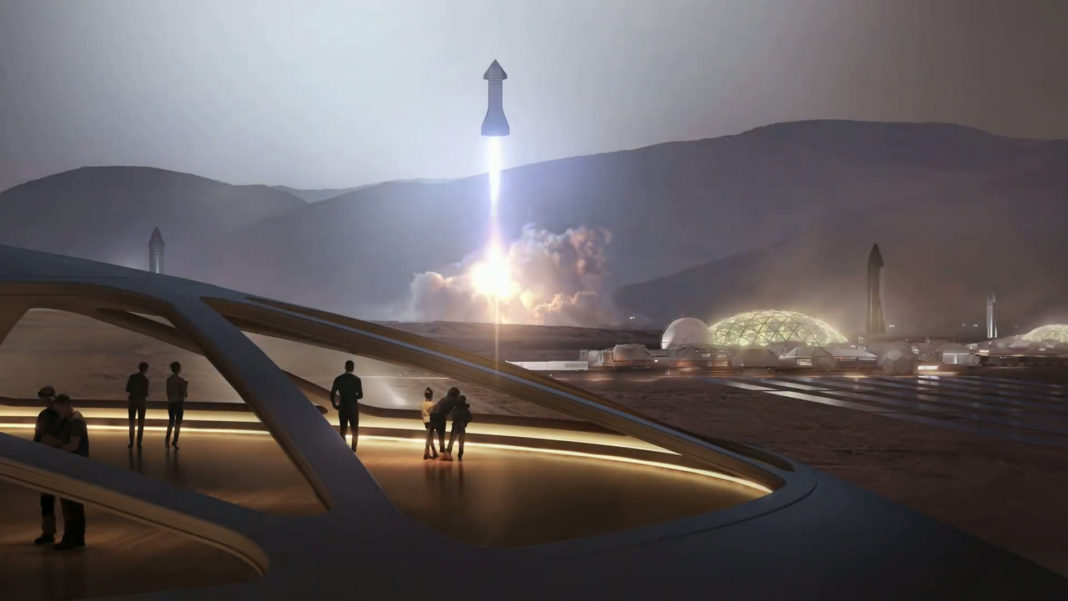The SN2’s survival could pave the way for flight tests in the near future.
SpaceX’s newest prototype of its Starship Mars-colonizing vehicle just passed a crucial pressure test, potentially paving the way for more ambitious trials in the near future.
Starship version SN2 survived a cryogenic pressure test late Sunday (March 8) at SpaceX’s South Texas facilities, company founder and CEO Elon Musk said. You can see a video timelapse of the test from Starship watcher Mary “BocaChicaGal here for NASASpaceflight.com.
“SN2 (with thrust puck) passed cryo pressure & engine thrust load tests late last night,” Musk tweeted Monday (March 9).
Similar tests felled the SN2’s two predecessors, the SN1 and an earlier design known as the Mark 1. SpaceX resolved to get to the bottom of the issue quickly, focusing on the “thrust puck,” the structure where Starship’s Raptor engines are mounted.
“We’re stripping SN2 to bare minimum to test the thrust puck to dome weld under pressure, first with water, then at cryo. Hopefully ready to test in a few days,” Musk tweeted on March 2.
With Sunday night’s success in hand, a Starship prototype flight could be coming in the near future.
“Static fire & short flights with SN3, longer flights with SN4, but spooling up the whole Starship/Raptor production line is really what matters,” Musk tweeted Monday, in response to a Twitter follower who asked what the path forward now looks like.
And the iterations won’t stop with SN4. Musk has said that SpaceX’s strategy for getting Starship up and running involves frequently modifying the spacecraft’s design and quickly testing those modifications, to see what works and what needs improvement.
The goal, as the above tweet notes, is to get Starship and its enormous first stage, a rocket called Super Heavy, into efficient and prodigious production. Indeed, Musk recently told Ars Technica’s Eric Berger that SpaceX aims to be building one Starship per week by the end of 2020.
The company has big plans for all of those ships: the colonization of Mars. Musk would like to help establish a million-person city on the Red Planet within the next 50 to 100 years, and making this happen will likely require launching huge numbers of Starships toward the Red Planet every 26 months. (That’s when Earth and Mars align favorably for interplanetary missions.)
Both Starship and Super Heavy are designed to be fully and rapidly reusable, features that are critical to making colonization happen. Super Heavy will loft Starship to Earth orbit, then come back down to the planet for a vertical landing, like the first stages of SpaceX’s Falcon 9 and Falcon Heavy rockets already do. Starship, meanwhile, will be powerful enough to launch itself off the surfaces of the moon and Mars, where gravity is much weaker than on Earth.
Reusability lowers costs considerably. Musk recently said that each Starship mission could eventually cost as little as $2 million.
And this future won’t be too far off if everything goes according to SpaceX’s plan. For example, company representatives have said that Starship could start launching satellites to Earth orbit by next year. And Starship already has one crewed mission on its docket: Japanese billionaire Yusaku Maezawa booked the craft on an around-the-moon mission that’s scheduled to lift off in 2023.













![Hotstar Premium Cookies 2019 [*100% Working & Daily Updated*] Hotstar Premium Cookies 2019 [*100% Working & Daily Updated*]](https://tahav.com/wp-content/uploads/2019/11/Hotstar-Premium-Cookies-Free-100x70.jpg)



